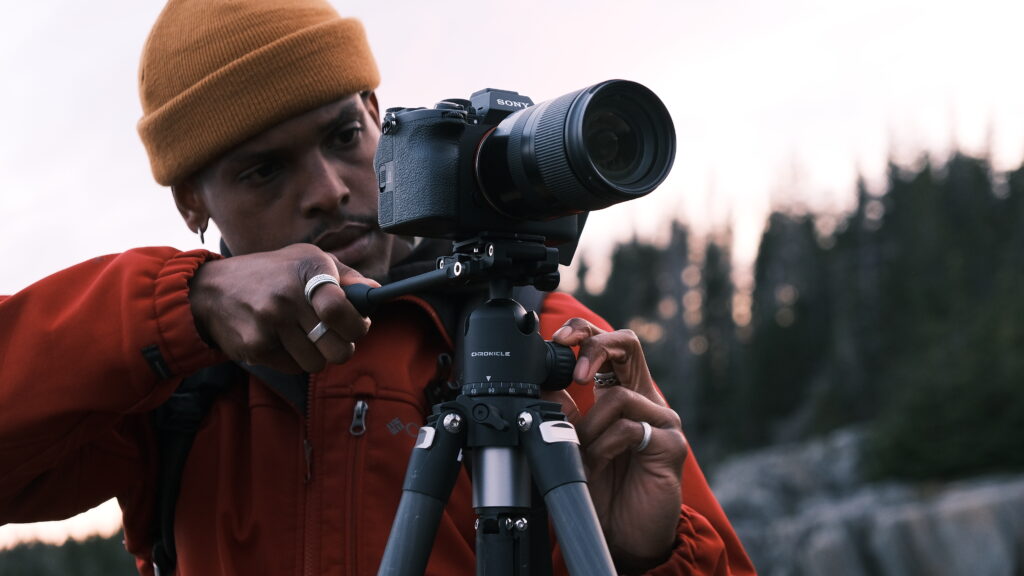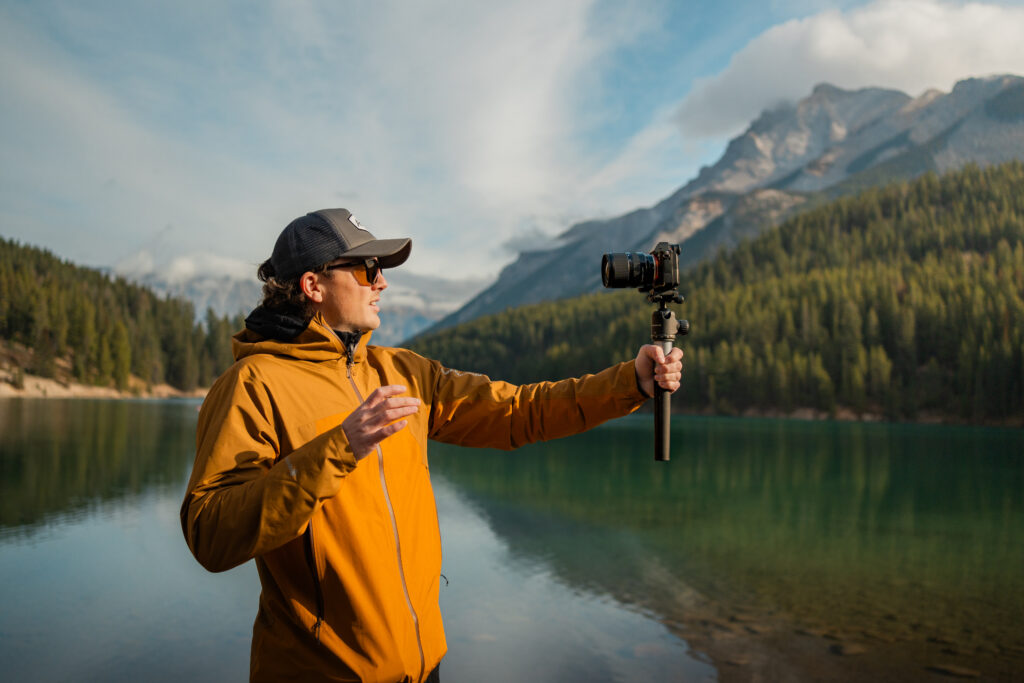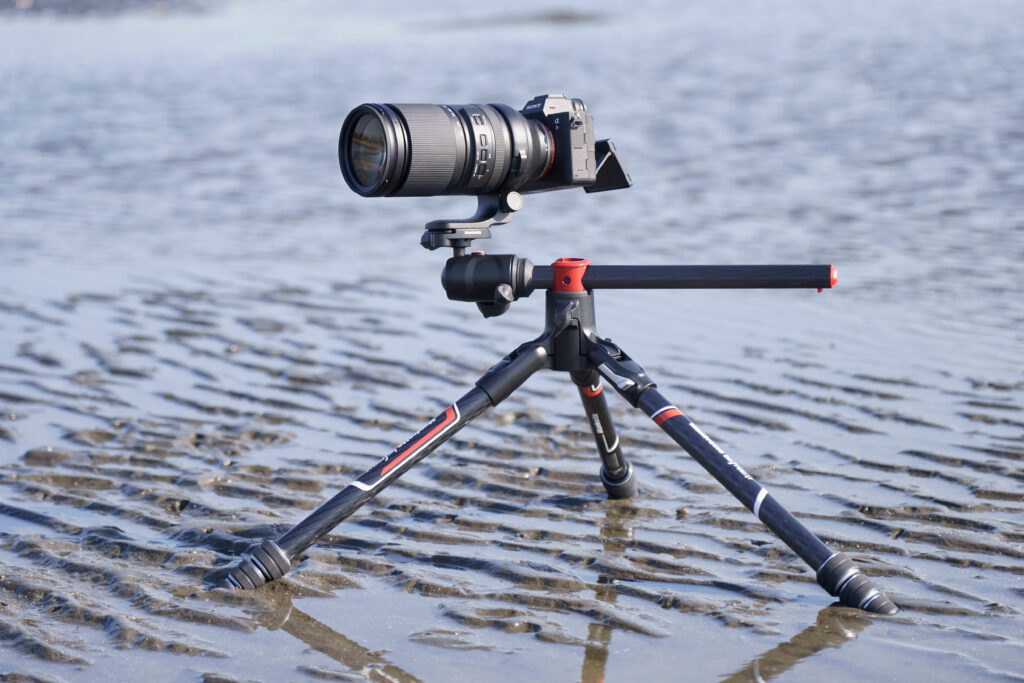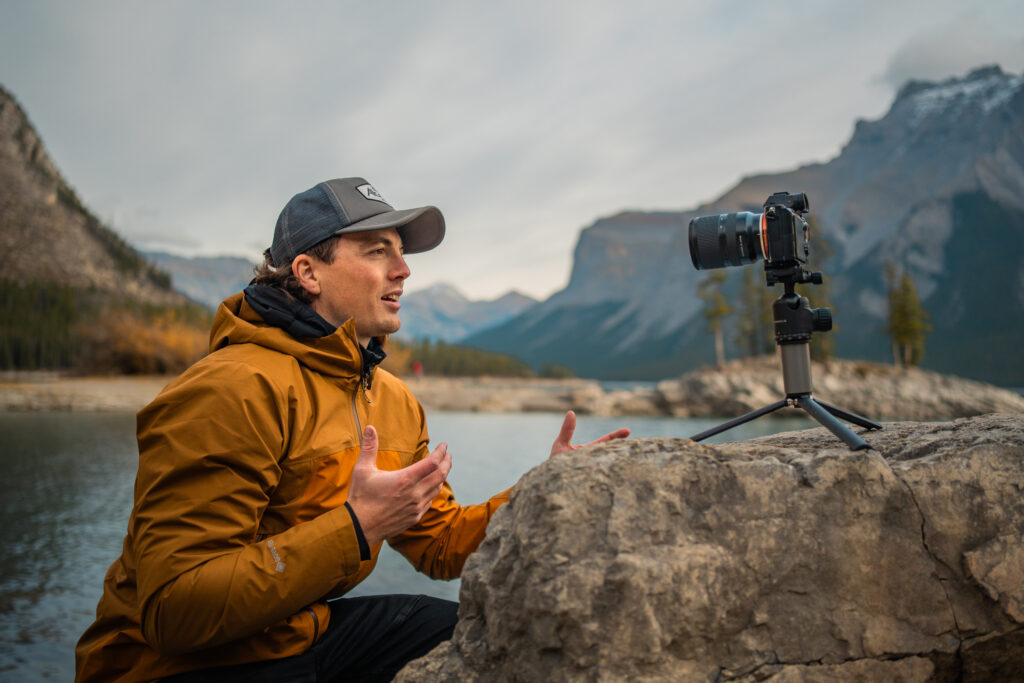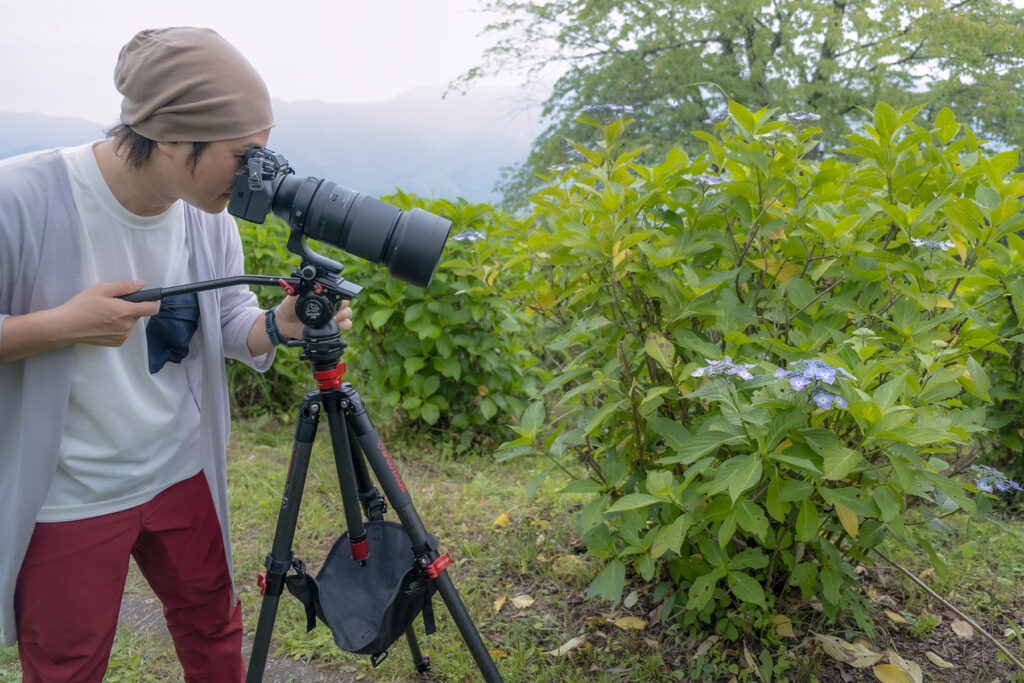Tripés
Como fotógrafo, há certos equipamentos que, sem eles, simplesmente não podemos criar as imagens que desejamos. Um tripé está no topo dessa lista, especialmente quando queremos ser criativos!
©courtesy of www.promaster.com
Por que é necessário um tripé?
Quando se trata de velocidades do obturador, a regra geral para fotografar com a câmera na mão é que a velocidade do obturador só pode ser tão baixa quanto a distância focal milimétrica em que você está fotografando. Por exemplo, a 200 mm, você deve fotografar a não menos que 1/200th segundo. É claro que essa regra mudou com a tecnologia de estabilização de imagem, como a VC (Vibration Compensation, compensação de vibração) da Tamron, que permite fotografar com a câmera na mão em velocidades de obturador de 2 a 5 pontos mais lentas do que nunca. O valor da compensação varia de acordo com a lente e o sistema.
No entanto, ainda é impossível segurar a lente por 30 segundos ao tentar fotografar a Via Láctea, ou por 1 minuto ao usar um filtro de densidade neutra para fotografar uma cachoeira usando uma exposição longa, ou por uma exposição de 1 hora ao fotografar um rastro de estrelas.
Por que não posso simplesmente equilibrar minha câmera em algo estável?
Equilibrar-se com firmeza no capô de um carro ou em uma pedra em primeiro plano é simplesmente impossível. O simples movimento ao respirar ou as vibrações de um trem subterrâneo na cidade podem empurrar a câmera, resultando em um tremor visível na imagem. Além disso, tentar equilibrar a câmera em um objeto não permite, na maioria das vezes, obter o ângulo desejável necessário para a composição. A única maneira de tirar fotografias que exigem longas exposições corretamente é com um tripé.
©courtesy of www.promaster.com
Quando eu usaria um tripé com mais frequência?
Os tripés são necessários nas seguintes situações:
- Ao fotografar o céu noturno, sua exposição pode variar de 20 segundos a 1 minuto, dependendo das condições.
- Ao fotografar paisagens que exijam o uso de uma abertura pequena, como F/16-32, e configurações ISO mais baixas, pois isso resultará em velocidades de obturador mais baixas que não podem ser mantidas na mão.
- Captura de imagens HDR em que a imagem não pode se deslocar entre as exposições.
- Panorama em que, idealmente, você não quer que as imagens individuais se desloquem para cima ou para baixo.
- Ao fotografar cachoeiras, rios e outras águas que se movem rapidamente e você deseja obter a aparência "leitosa" da água, essa técnica requer o uso de velocidades de obturador mais lentas do que podemos suportar.
- A maioria dos fotógrafos de paisagens, arquitetura e macro usa tripés religiosamente para obter as imagens mais nítidas possíveis.
Quais funções devo procurar em um tripé?
Os tripés variam em estilo, função e preço. Quanto mais funções forem incorporadas ao tripé, como a coluna central removível, um acessório de monopé, o comprimento das pernas, o tamanho dobrável e o peso, isso afetará o custo, bem como o material usado na fabricação. Os tripés geralmente são fabricados em fibra de carbono, alumínio ou plástico, sendo a fibra de carbono a mais cara das opções.
- Uma coluna central removível permite que você se abaixe no chão, para obter o menor ângulo possível.
- Um acessório de monopé, que geralmente é a própria coluna central ou uma perna que se destaca da base do tripé, proporcionando a conveniência de um monopé embutido.
- O comprimento das pernas é importante para que você possa ficar tão alto ou tão baixo quanto necessário, para atingir o ângulo desejado.
- O peso e o tamanho dobrável são importantes para a conveniência e para viagens em que a leveza e o tamanho reduzido são fundamentais. Lembre-se de que tripés mais pesados, com maior espessura e resistência, são necessários para manter estáveis combinações de corpos de câmera/lentes mais pesadas e sistemas de formatos maiores, portanto, é essencial comprar o tripé certo para se adequar à carga do seu equipamento. Se o seu tripé for muito pesado, você corre o risco de ele cair se for atingido ou se estiver em condições de vento forte.
- Cabeçotes intercambiáveis para várias aplicações, como fotografia versus vídeo.
- Compatibilidade Arca Swiss que permite deslizar facilmente a câmera para dentro e para fora do tripé.
©courtesy of www.promaster.com
Os tripés são fáceis de usar?
Alguns tripés têm muitos recursos e ajustes disponíveis para que você possa ajustar sua composição o máximo possível. Certifique-se de conhecer todos os botões, alavancas e outros recursos de ajuste antes de sair para evitar frustrações no campo. Isso é especialmente importante quando estiver fotografando o céu noturno no escuro. Algumas dicas para montar seu tripé são:
- Posicione uma perna do tripé na direção do objeto para facilitar a locomoção ao redor dele e para dar mais estabilidade, especialmente ao usar uma lente ultra-teleobjetiva, pois ela também estará apontando para o objeto.
- Se estiver em um terreno irregular, ajuste cada perna para ficar o mais nivelado possível e ajuste usando o nível de bolha para ter certeza de que está nivelado com o horizonte.
- Pendure a bolsa da câmera no tripé se ela for pesada na frente para evitar que caia.
- Use a coluna central somente se precisar de altura adicional. É melhor estender as pernas para manter a estabilidade.
Quanto custa um tripé?
O custo dos tripés varia de cerca de $100 a alguns $1000 dólares, dependendo do uso, dos materiais e dos recursos. No entanto, o investimento certamente vale a pena, pois esse é um equipamento que pode melhorar ou prejudicar sua imagem e é tão importante quanto a câmera e a lente. Lembre-se de que um tripé pode durar a maior parte da carreira de um fotógrafo se for comprado corretamente e limpo de forma adequada.
©courtesy of www.promaster.com
Devo usar minha estabilização de imagem ao usar um tripé?
É necessário desligar a lente e/ou a estabilização no corpo (IBIS) para garantir que não haja trepidação, o que resultará em uma imagem borrada causada pelo mecanismo de estabilização que trabalha para encontrar trepidação quando não há nenhuma.
Conclusão
Não tenha pressa em selecionar o(s) tripé(s) certo(s) para suas necessidades. Se suas necessidades mudarem com o tempo, atualize para um novo tripé com os recursos de que você precisa. Em todos os casos que exigem estabilidade exata, você nunca se arrependerá de ter deixado o tripé em casa.
 Reivindicações de bônus
Reivindicações de bônus